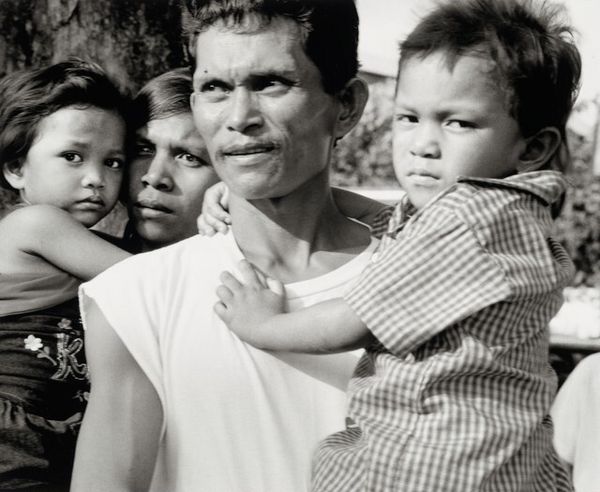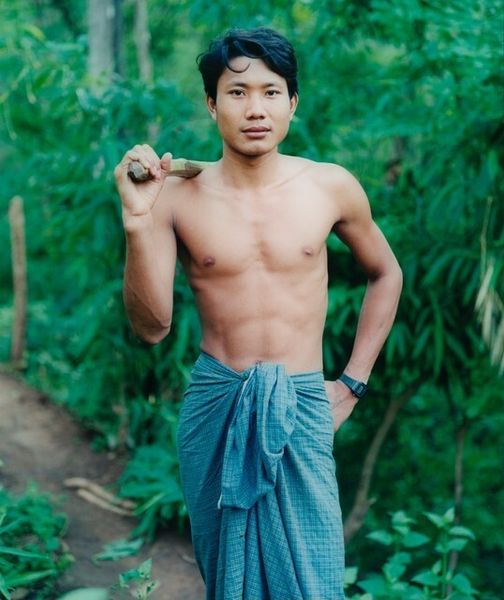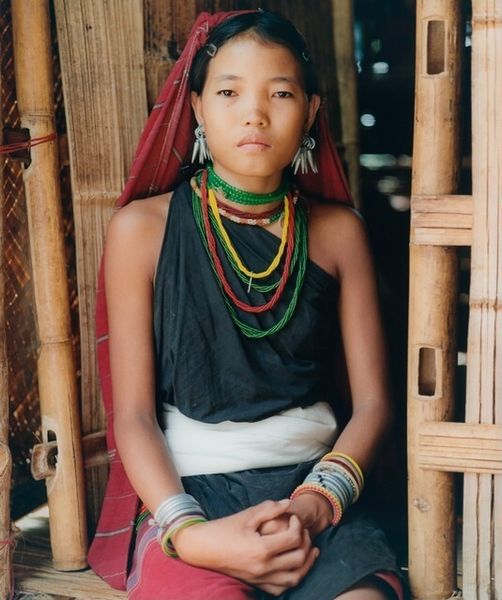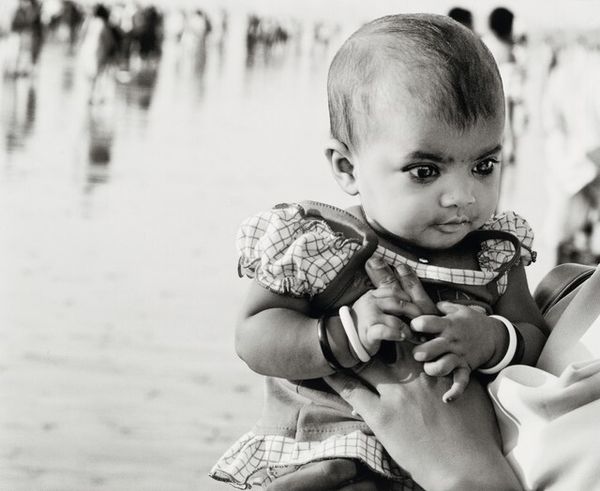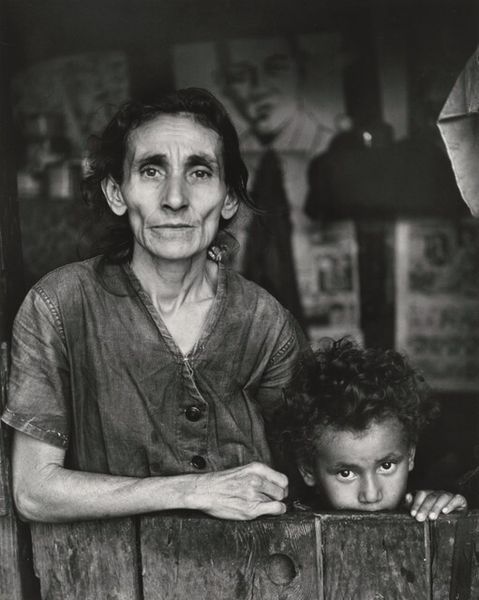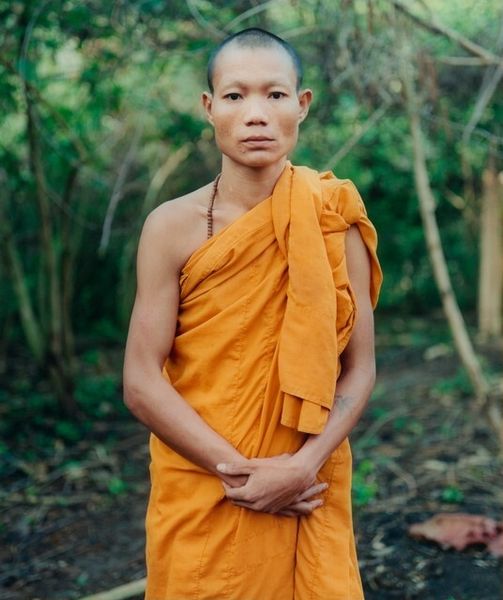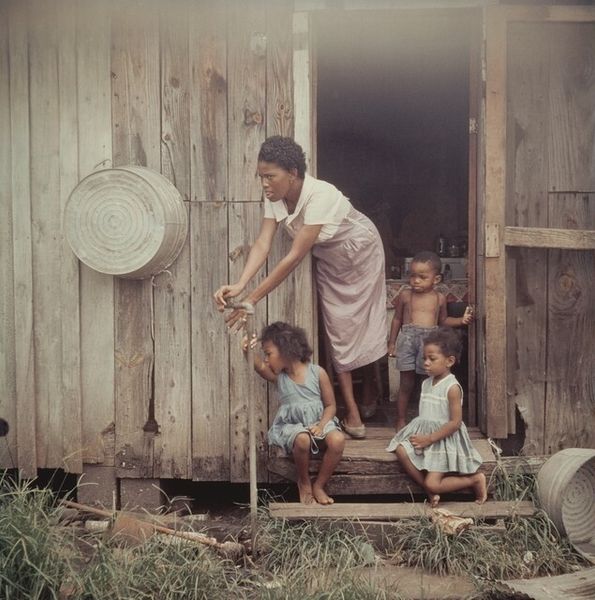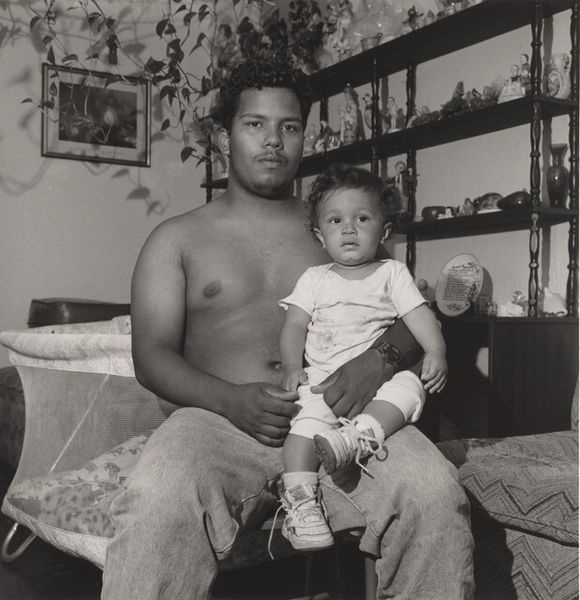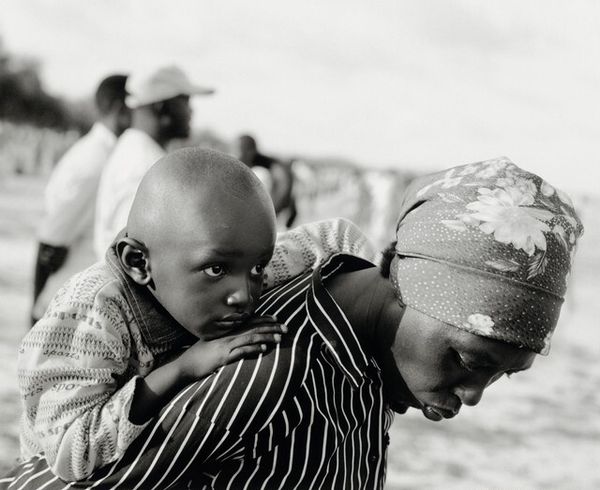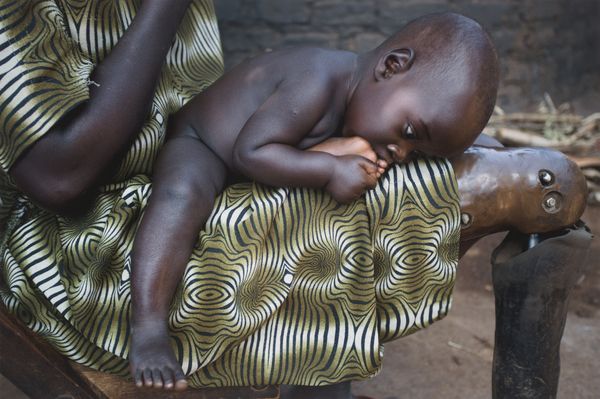
Dimensions: image: 53.34 × 42.55 cm (21 × 16 3/4 in.) sheet: 60.96 × 50.8 cm (24 × 20 in.)
Copyright: National Gallery of Art: CC0 1.0
Editor: We're looking at "Aung Ko with Yan Naing," a photograph by Chan Chao taken in 1997. It's a straightforward portrait of a father and child, and what strikes me most is the stark contrast between their expressions and the somewhat blurred background. How would you interpret this photograph? Curator: Let’s think about the physical elements. The materials used in their clothing – the cotton of the shirt, the woven textile of the father's lower garment, and the striped fabric of the child’s shirt – point to specific economies and traditions of cloth production and access. The watch the father is wearing—that adds another layer. Where was it manufactured? How did it reach him? Editor: That's interesting – I hadn't thought about the clothes as objects with histories of production. Curator: Precisely! This isn't just about aesthetics. Consider the labor involved in making each item, from growing the cotton to weaving the fabrics and manufacturing the watch. We are viewing the products of globalized production even in what appears to be a simple portrait. The setting, suggested but unfocused, plays into that too; it invites a questioning of rural or urban location, which dictates the availability of goods. What relationship do the subjects have to the wider market? Editor: So you're seeing the photograph as less of a portrait of individuals and more of a document reflecting economic realities. But what about the people themselves? Are they just symbols of production? Curator: Not just symbols, but inextricably linked to material conditions. The photograph highlights their participation in—and perhaps their position relative to—systems of labor and consumption. This image, like any object, exists as part of a cycle of extraction, production, distribution, and ultimately, representation. Understanding those systems deepens our understanding of the photograph itself, don't you think? Editor: It definitely gives me a lot to consider about what photography can tell us about more than just what’s in front of the camera. Curator: Exactly, and hopefully this approach gives you a lens for examining more works.
Comments
No comments
Be the first to comment and join the conversation on the ultimate creative platform.

